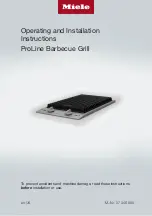
6. When the charger is in use it MUST be supervised , if there is any evidence of overheating then
IMMEDIATELY disconnect the charger from the power supply.
7. If gas or smoke is emitted from the battery during charging switch off the power supply , and
move to a well vented area to allow the fumes to vent to atmosphere.
Caution is there is leaking liquid from the battery wear protective clothing, glasses and clothes as
this can be acidic.
8. Always disconnect battery charger and remove battery from charger when the charging is
complete.
9. Only use the battery charger specifically stated on the base of the battery.
FOR BATTERY
1. Always remove the battery pack from the charger immediately after re-charging is completed.
2. When not in use, remove a charged battery pack from the charger.
3. Do not charge a damaged battery pack.
4. Do not charge non-rechargeable batteries.
5. Do not install the battery backwards so the polarity is reversed.
6. Do not connect the positive terminal and negative terminal of the battery to each other with any
metal object (such as wire).
7. Do not carry or store battery together with necklaces, hairpins or other metal objects.
8. Do not pierce the battery with nails, strike the battery with a hammer, step on the battery or
otherwise subject it to strong impacts or shocks.
9. Do not solder directly onto the battery.
10. Do not expose battery to water or salt water, or allow the battery to get wet.
11. Do not disassemble or modify the battery. The battery contains safety and protection devices,
which, if damaged, may cause the battery to generate heat, explode or ignite. The protection
circuit module provided with battery packs is not to be used as a substitute for a shut-off switch.
12. Do not place the battery in or near fire, on stoves or other high temperature locations. Do not
place the battery in direct sunlight, or use or store the battery inside cars in hot weather. Heating
the battery can damage the safety circuitry, which can cause additional heating, rupture or ignition
of the battery. Using the battery in this manner may also result in a loss of performance and a
shortened life expectancy.
13. Do not place the battery in microwave ovens, high-pressure containers or on induction
cookware.
14. If you intend to store a battery for a period without use then store battery at room temperature
(19°C to 25°C), charged to about 30 – 50% of capacity. When storing for very long periods
boost-charge the battery once per year to prevent over discharge.
15. Always charge the battery in a temperature range of 0°C to 45°C and discharge in a
temperature range of 0°C to 75°C.
16. The battery pack and charger will be warm during charging, this is normal.
17. Do not continue charging the battery if it does not recharge within the specified charging time.
Doing so may cause the battery to become hot, explode or ignite. The temperature range over
which the battery can be charged is 0°C to 45°C. Charging the battery at temperatures outside
this range may cause severe damage to the battery or reduce battery life expectancy.
18. When the battery is worn out, insulate the terminals with adhesive tape or similar materials
before disposal.
19. Do not dispose of batteries in fire, or with household waste. Return exhausted batteries to
your local collection or recycling point.





































